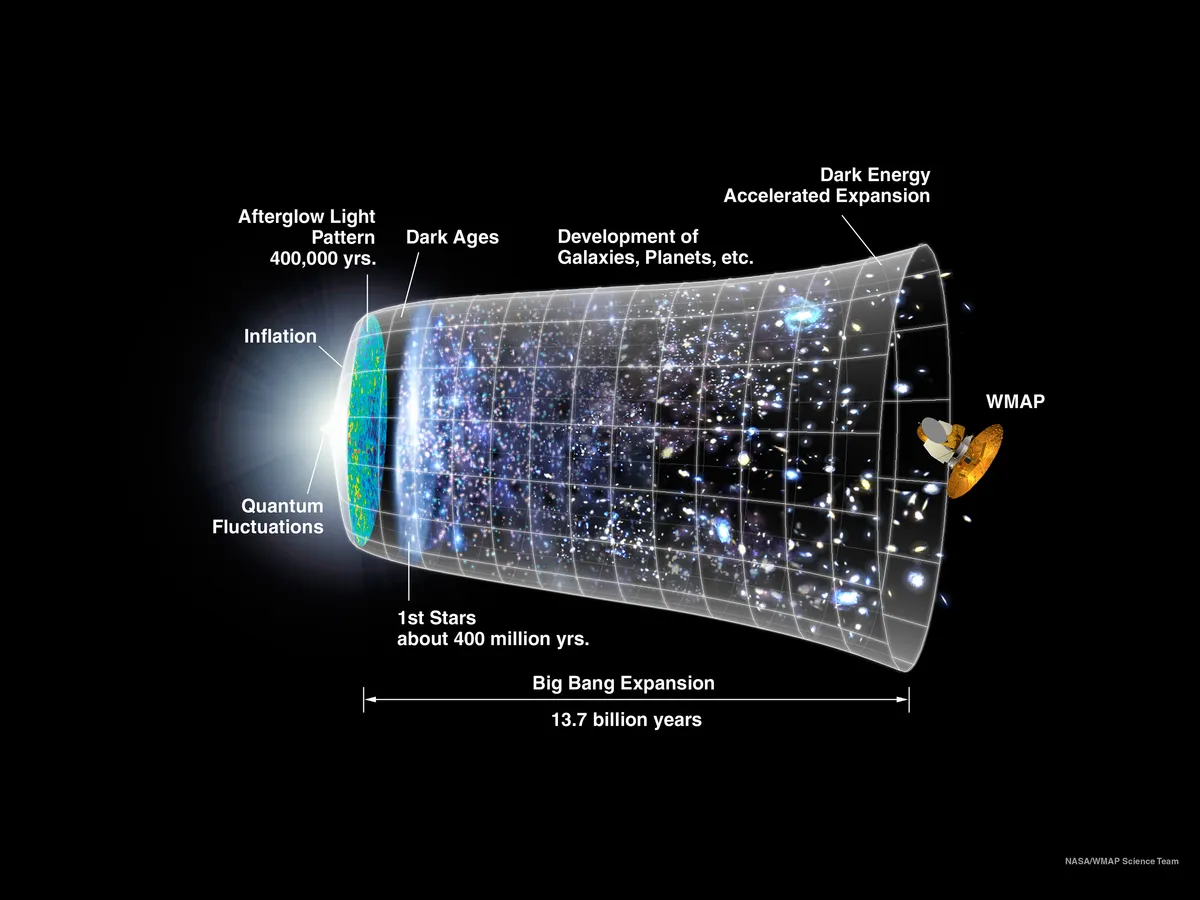About 13.8 billion years ago, the universe threw what might be the wildest tantrum in all of existence. Not an explosion. Not a bang. More like space itself hit the gas pedal, tossed the speed limit out the window, and expanded faster than light everywhere, all at once.
This wasn't a firework. It was reality inflating from subatomic to cosmic scale in a mind-meltingly brief moment. Less than a trillionth of a second. Faster than you can blink? Please. Blink and you'll miss it by 10³⁰ lifetimes.
Welcome to Cosmic Inflation the universe's opening act, and still its weirdest.
What Even Was This Madness?
Imagine the entire universe squeezed into a dot smaller than a proton. Now imagine that dot swelling to the size of a grapefruit (or maybe a beach ball, depending on your favorite metaphor) in 0.0000000000000000000000000000000001 seconds.
This wasn't matter flying through space this was space stretching. Like someone grabbed the edges of the universe and yanked hard, pulling everything apart so fast that entire regions lost sight of each other forever. One second, they're neighbors. The next, they're cosmic pen pals with no mailbox.
Cause and effect? Yeah, they took a vacation. Physics didn't break it just slipped into its "secret chaos mode."
The Timeline: From Quantum Hiccup to Cosmic Harmony
Let's chart the universe's fastest growth spurt:
- t = 0 seconds: A "singularity." AKA: the point where math panics and reality hasn't been invented yet.
- ~10⁻³⁶ seconds: Inflation begins. Space goes turbo. Size increases by a factor of 10²⁶ or more. Proton → grapefruit? Sure. Some models say light-years across.
- ~10⁻³² seconds: Inflation ends. The universe, slightly breathless, settles into a slower, saner expansion.
- Microseconds later: Quarks and gluons show up. Matter begins forming.
- ~3 minutes in: Nuclei form. Hydrogen and helium dominate the cosmic soup.
- 380,000 years later: Atoms assemble. Light is freed. This glow becomes the CMB the baby picture of the universe.
Why the Universe Needed a Lightspeed Growth Spurt
Without inflation, the universe makes no sense at all. Like, Windows-95-crashing-level nonsense.
The Horizon Problem
Why is the universe the same temperature in every direction, even between regions that never had time to interact? Inflation says: they were once close then ripped apart before they could say goodbye.

The light from the Cosmic Microwave Background (CMB) comes from regions that were too far apart to have ever interacted when the universe was young. Yet, they have nearly the same temperature. This puzzling uniformity despite no time for signals to travel between them is called the horizon problem.
The Flatness Problem
Space is weirdly, suspiciously flat. Not curved, not crinkled. Just… smooth. That's unlikely without something like inflation steamrolling the early universe into a cosmic pancake.
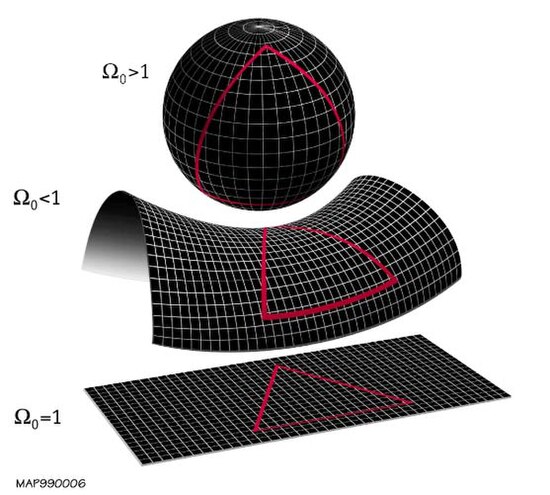
The shape of the universe depends on its overall density. If the density is too high, space curves like a sphere. If it's too low, it curves like a saddle. Only a very precise balance makes space flat and observations show it's extremely flat. The problem? Tiny changes early on would have made it wildly curved today. This surprising fine-tuning is called the flatness problem.
Inflation didn't just make things big. It made things make sense.
Wait, Did This Actually Happen Faster Than Light?
Yes and no.
Einstein's theory of relativity still stands: nothing can move through space faster than light. But here's the loophole: space itself can stretch faster than light and it did.
Think of ants on a balloon. The ants crawl slowly (that's light speed). But inflate the balloon fast enough, and those ants get separated way quicker than they can crawl. No rules broken just the game board changing.
Who Spiked the Universe's Energy Drink?
The leading suspect: a mysterious energy field called the inflaton.
The Inflaton Field
This theoretical field filled early space with repulsive energy not "ugh, gross" repulsive, but "gravity-reversing, expansion-inducing" repulsive.
At some point, the inflaton field lost its grip and decayed, unleashing its energy into particles, radiation, and the building blocks of everything. Galaxies. Black holes. Netflix. You.
We've never seen the inflaton directly, but its shadow may linger in the CMB and even in primordial gravitational waves ancient ripples still hiding in the cosmic static.
The MVPs: The Drama Club of Theoretical Physics
Alan Guth (1980)
Father of inflation. Solved several Big Bang plot holes with one bold idea.
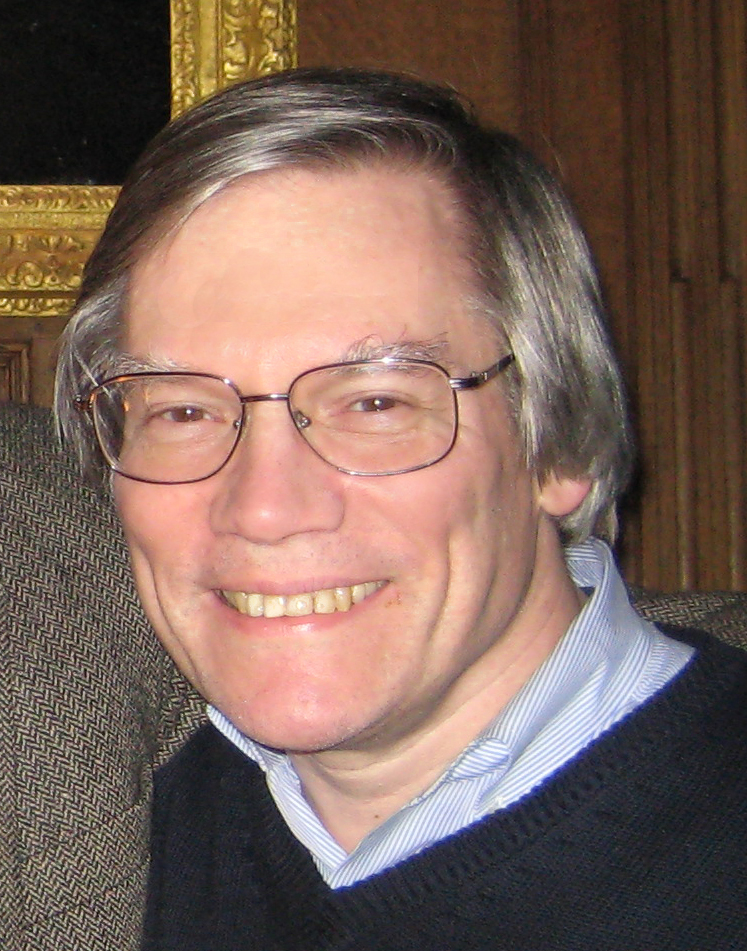
Andrei Linde
Took Guth's model and made it eternal and chaotic. Suggested our universe might be one bubble in a frothing cosmic foam.
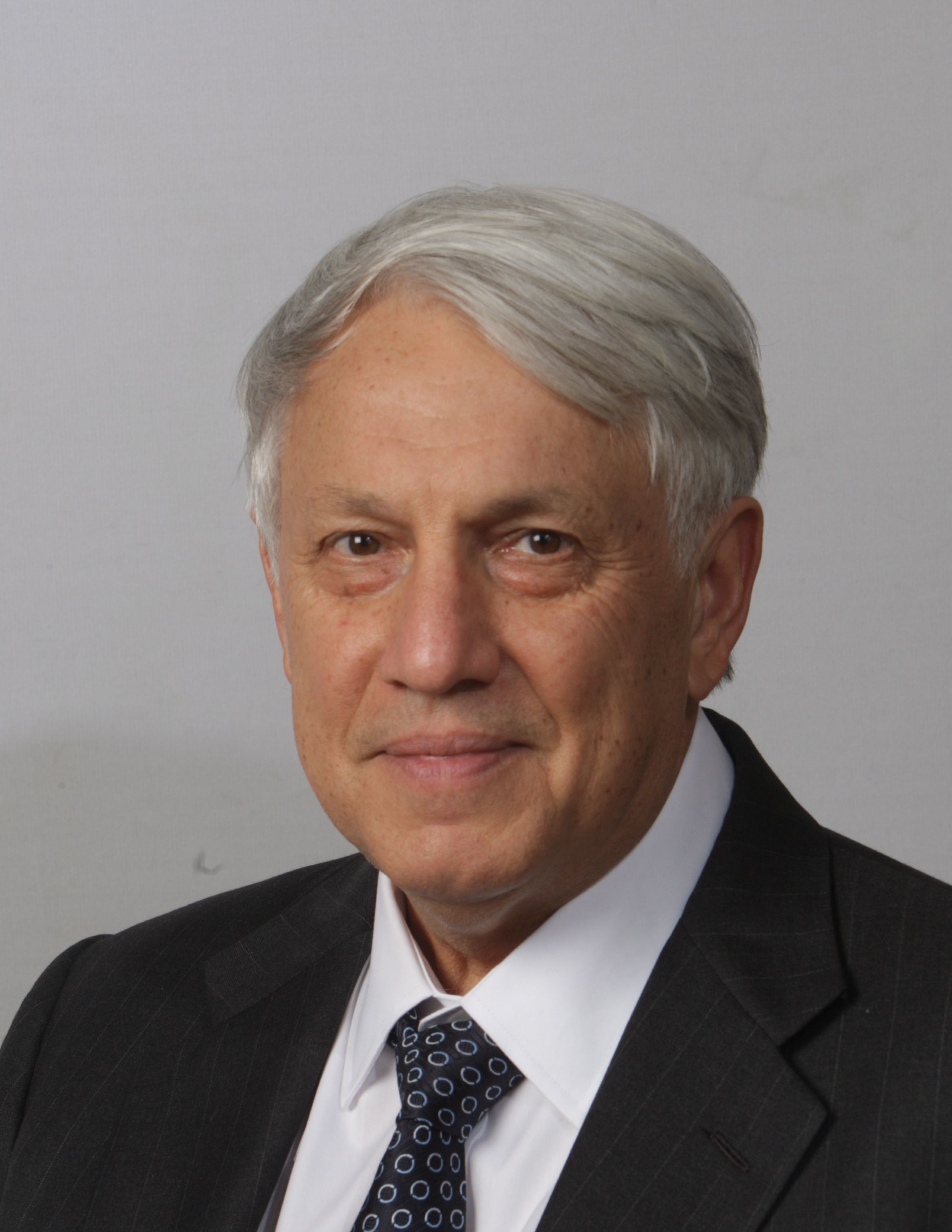
Stephen Hawking
Brought quantum mechanics into the party, showing how quantum jitters during inflation could seed galaxies.

Roger Penrose
Politely disagreed with everyone. Proposed a universe without inflation one that cycles through births and deaths like a phoenix in a lab coat.
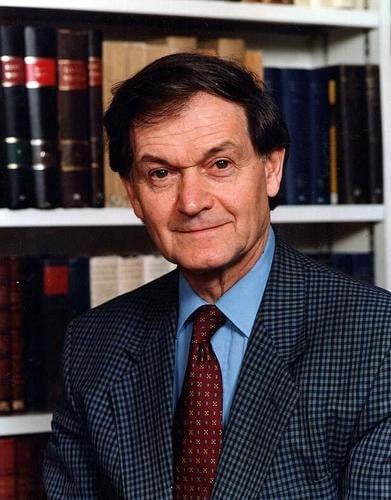
Quantum Fluctuations: The Wiggles That Made Worlds
Here's where it gets cosmic and creepy.
During inflation, even the tiniest quantum fluctuations random, microscopic blips in energy got blown up to astronomical size. These ripples became density differences. Those turned into galaxies. Which turned into stars, planets... and eventually, you.
The universe is made of noise. We're just the echo.
“My goal is simple. It is a complete understanding of the universe, why it is as it is and why it exists at all" -Stephen Hawking
The Multiverse: Welcome to the Bubbleverse
Some versions of inflation say it never really stopped.
In some regions, inflation continues. Forever. Occasionally, it quits in one patch pop! and a bubble universe forms.
Each bubble has:
Its own physics
Some collapse:
Instantly
One might be:
Sentient pizza
Ours? Ours got lucky. Stars formed. Chemistry worked. Cats discovered cardboard boxes.
We may be one bubble in a cosmic foam bath of infinite realities and others might be wondering about us, too.
Still Unsolved: The Questions That Haunt Cosmologists
Open Questions
- • What triggered the inflaton field?
- • Why did inflation end when it did?
- • Can we ever detect primordial gravitational waves?
- • Is inflation the right story or just the most popular theory in the room?
The beauty of physics? The best answers always lead to bigger questions.
Final Thought
Cosmic inflation was the universe's most dramatic mic drop a furious burst of expansion that shaped everything.
It took randomness and made it structure. It took instability and made it law. It gave us galaxies from quantum foam, order from chaos, and left us with an eerie afterglow still whispering through space.
So next time you see static on an old TV, remember: That's not just noise. That's the afterparty of creation.
The Physics Breakdown
What We Know:
- • Universe expanded faster than light speed
- • Inflation explains horizon and flatness problems
- • Quantum fluctuations seeded galaxy formation
- • CMB radiation confirms early universe predictions
What We Don't:
- • What the inflaton field actually is
- • Why inflation started or stopped
- • If we live in a multiverse bubble
- • How to detect primordial gravitational waves
Key Equations for Cosmic Inflation:
Friedmann Equation:
H² = (8πG/3)ρ - k/a²
Inflation Scale Factor:
a(t) ∝ e^(Ht)
